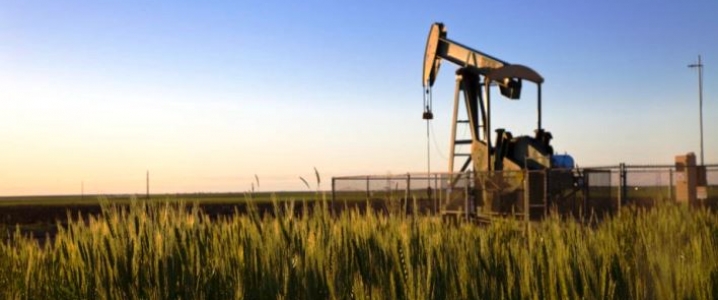The Permian Boom Is Coming To An End

The pressure on shale drillers to throttle back on their aggressive drilling continues to crop up in new places, and there are growing signs that the Permian is slowing down.
Shale companies spent just $5 billion on land deals in West Texas in the last six months, a fraction of the $35 billion spent in the prior nine-month period, according to the Houston Chronicle, citing Wood Mackenzie data.
It’s the latest piece of evidence to suggest that “Permania” might be easing. The hottest shale basin on the planet has suffered from rising costs as too many companies pour money into West Texas. The crowded field has pushed up the price of land, labor, oilfield services, rigs and more. That has led to a rude awakening for a lot of shale drillers. “It’s just taken the edge off the Permian,” said Greig Aitken, head of upstream oil and gas mergers and acquisitions at Wood Mackenzie, according to the Houston Chronicle.
Many signs suggest that the falling costs of production have stopped falling. In fact, production costs are on the rise again, for a few reasons. First, the low hanging fruit of cost cutting has ended—there’s no fat left to cut and deeper reductions would mean cutting into bone. Second, as mentioned before, there is cost inflation in a lot of areas, including labor, fracking crews and acreage.
But arguably the most troubling development for shale drillers would be if the production figures from the oil well disappoint—and there are pieces of evidence that indicate there is cause for concern.
Over the summer, Pioneer Natural Resources reported a much higher than expected gas-to-oil ratio (GOR), raising alarm bells for investors worried about Permian production problems. The anxiety was compounded by the fact that many consider Pioneer one of the stronger shale drillers in the Permian. The company also revealed that it drilled some “train wreck” wells, although it reassured investors that it had solved the problem.
But as The Wall Street Journal notes, the “solution” added an additional $400,000 to each well. In other words, costs are adding up in many places, which will ultimately push up the breakeven price for shale drilling. Meanwhile, other E&Ps have had to lower their production guidance because of the backlog for oilfield services, which are delaying operations.
There’s a growing consensus that the pace of shale drilling needs to slow down, or else E&Ps will destroy value. “All these factors are pointing to slower, more methodical development,” said David Pursell, managing director at Tudor Pickering Holt, according to the WSJ. “That needs to happen.”
A shift toward more “methodical” development would likely mean that U.S. shale undershoots growth forecasts. While the EIA expects U.S. oil production to top 10 million barrels per day, the more prudent approach advocated by more and more shale investors would likely mean output remains flat for years to come, never topping 10 mb/d, according to BTU Analytics.
“There are no new shale plays that have come forward,” Mark Papa, CEO of Centennial Resource Development Inc., told the WSJ. “Their ability to spew forth infinite streams of oil is really just a myth.”
The EIA estimates that shale production is still on the rise, but further gains will be much harder to obtain. The rig count is still slowly ticking up, but the large weekly increases in rigs appears to be over. Because there is a lag between movements in the rig count and subsequent shifts in oil production, the recent slowdown in the rig count raises the possibility of oil output plateauing later this year.
Moreover, with several years of data on the books, it appears that while breakeven prices vary from company to company, the industry in the aggregate appears to start and stop at around $50 per barrel. With WTI struggling to hold gains above that threshold, there’s little room to run for shale companies. The explosive growth in the shale patch will need much higher oil prices if it is to continue.
The recognition that the Permian bonanza might be overdone could mark the dawn of a new era in which shale companies feel compelled to take a more cautious approach and live within their means.
Some activist investors are seeking dramatic changes to executive compensation as a way of incentivizing profits rather than simply higher levels of drilling. Pioneer Natural Resources’ CEO Tim Dove recently told an industry conference in Oklahoma City that he was feeling the heat from a “thundering herd” of investors, pressing him to focus on shareholder returns.
Related News
Related News

- Keystone Oil Pipeline Resumes Operations After Temporary Shutdown
- Biden Administration Buys Oil for Emergency Reserve Above Target Price
- Freeport LNG Plant Runs Near Zero Consumption for Fifth Day
- Enbridge to Invest $500 Million in Pipeline Assets, Including Expansion of 850-Mile Gray Oak Pipeline
- Williams Delays Louisiana Pipeline Project Amid Dispute with Competitor Energy Transfer
- Evacuation Technologies to Reduce Methane Releases During Pigging
- Editor’s Notebook: Nord Stream’s $20 Billion Question
- Enbridge Receives Approval to Begin Service on Louisiana Venice Gas Pipeline Project
- Russian LNG Unfazed By U.S. Sanctions
- Biden Administration Buys Oil for Emergency Reserve Above Target Price




Comments